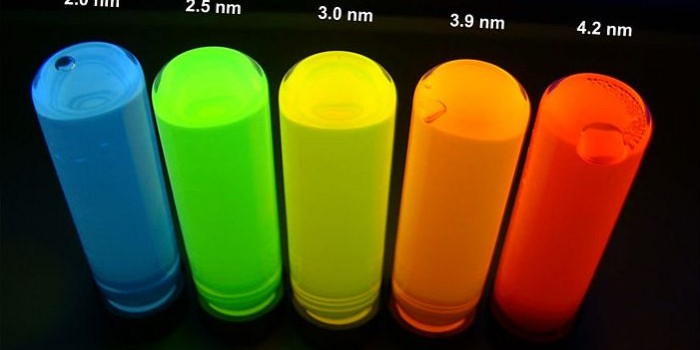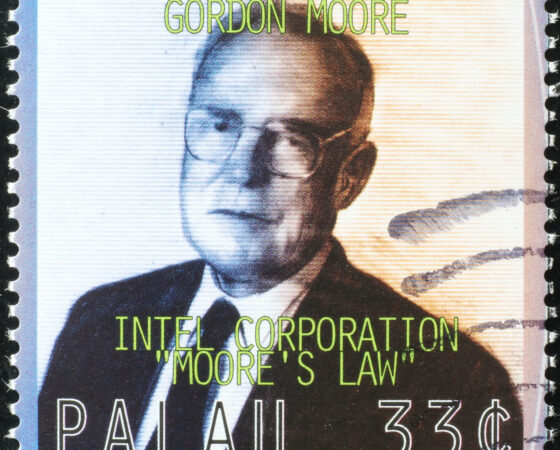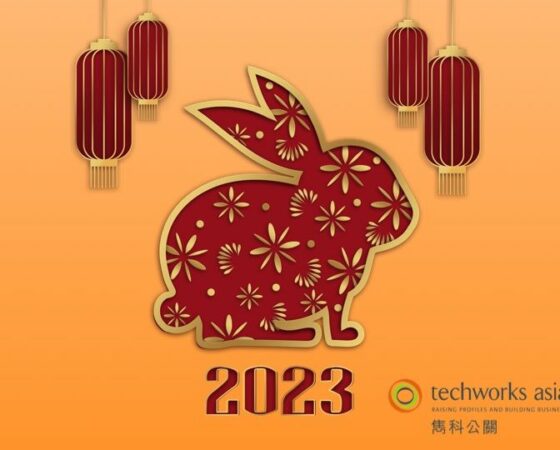The global TV industry is under constant pressure to deliver ‘the next big thing’ to the consumer. Enter quantum dots (QDs). Since this news blog is not the place for a physics lesson in wide bandgaps and exciton pairs, suffice to say a quantum dot or QD is a semiconducting nanocrystal, with a diameter in the range of 2-10 nanometers (10-50 atoms), that can emit visible light when irradiated by a suitable light source. The emitted light can be tuned to different color frequencies, including pure reds and greens, simply by varying the size of the nanocrystal. Semiconducting materials used in the production of QDs include silicon, cadmium selenide, cadmium sulfide, and indium arsenide.

Commercial application in TVs
The back story to the use of QDs in TVs is the delay in bringing affordable organic light-emitting diode (OLED) TVs to market. While self-emissive OLED displays, free from the inefficiencies of backlighting, have been the holy grail of the global display industry, their commercial development has been frustratingly slow, for a variety of reasons. And when OLED TVs have been produced and put on the market, their price has put them beyond the reach of the average consumer.
QDs were quickly recognized as one possible way to “cut to the chase” and achieve the brilliant color quality of OLED technology cost effectively, affordably and relatively quickly. In other words, QDs promise at least ‘close to OLED’ quality TV for the average consumer living room.
In practice, TV makers have, to date, encountered difficulties in achieving a purely self-emissive QD display. Instead, they are usually using a layer of QDs to produce precise bright reds and greens, in combination with blue LED backlighting, for a richer RGB light source delivering a 100% NTSC-standard color gamut. To date, LCD TVs have usually delivered only 60-70% of the NTSC-standard color gamut.
Although cadmium-selenide nanocrystals have been frequently used as a ‘wide-bandgap’ semiconductor for QDs in the R&D labs, concern for the environment has placed TV makers under considerable pressure not to use heavy metals, such as cadmium, in their products. Cadmium-free quantum dots (CFQDs) have been developed in response. The Manchester, UK-based Nanoco Group plc is a case in point.
In March 2015, Nanoco published its 2015 Interim Results, highlighting how the company was making major progress in the commercialization of its CFQD technology, in partnership with worldwide licensing partner The Dow Chemical Company (“Dow”).
These Interim Results also highlighted how Dow is building the world’s first, large-scale CFQD manufacturing plant in South Korea, using Nanoco’s patented technology, with production expected to begin in mid-2015.
Optimism for the performance-enhancing impact of QDs on the TV industry grew rapidly in early 2015, bolstered by market research, as well as by the 2015 Consumer Electronics Show (CES), which confirmed QDs as a technology breakthrough for the worldwide TV industry.
In January 2015, market research firm DisplaySearch, now part of IHS Inc., correctly forecast that in order to boost consumer value in the LCD TV market, 4K ultra-high-definition (UHD) color LCD TVs using QD technology would become available in 2015. DisplaySearch’s projection was for 1.3 million QD TVs shipping worldwide, in 2015, with shipments expected to grow to 18.7 million units in 2018.
In Part II of this quantum-dot technology blog post, we’ll take a look at some of the products that had debuted by mid-2015.
Links
http://www.nanocotechnologies.com/regulatory_news_article/1913






